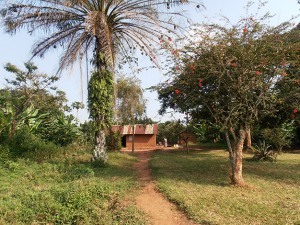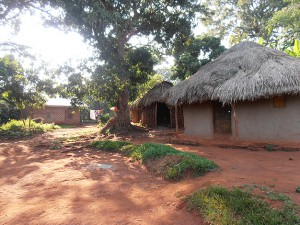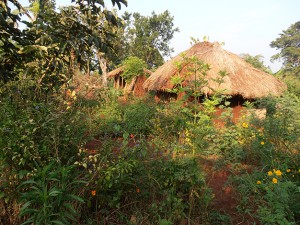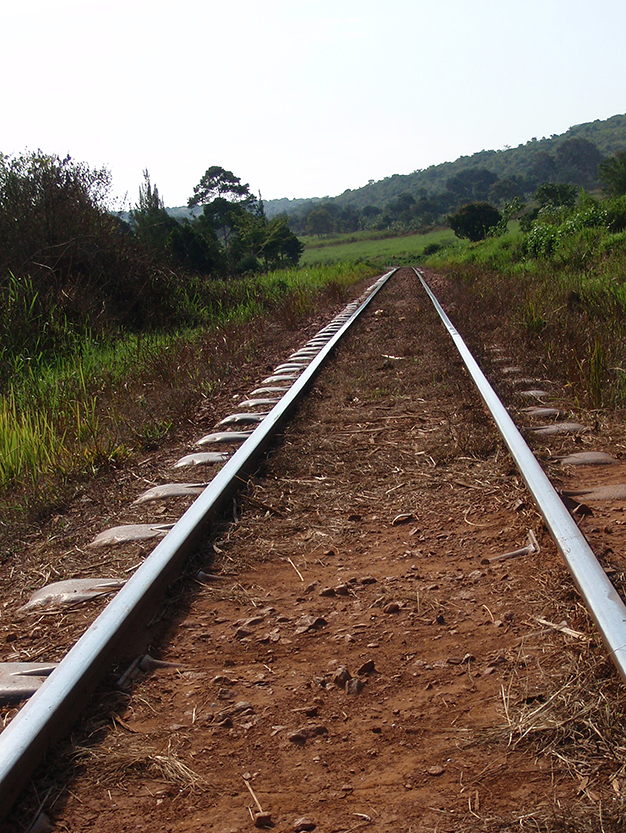









 Downtown Nyenga, with sales booths and small stores that sell all sorts of items, is approximately 4 km from the children’s home. A large, dusty gravel road connects the two. The cars driving here come with a high speed and leave a big, red dust-cloud behind them. When the rain season comes the road becomes muddy instead of dusty. Puddles dissolve the road and make its characteristic bumpiness. There are paved roads several places in Uganda, but since Nyenga lies out in the countryside there is only a gravel road here. The road from downtown Nyenga continues towards Lake Victoria.
Downtown Nyenga, with sales booths and small stores that sell all sorts of items, is approximately 4 km from the children’s home. A large, dusty gravel road connects the two. The cars driving here come with a high speed and leave a big, red dust-cloud behind them. When the rain season comes the road becomes muddy instead of dusty. Puddles dissolve the road and make its characteristic bumpiness. There are paved roads several places in Uganda, but since Nyenga lies out in the countryside there is only a gravel road here. The road from downtown Nyenga continues towards Lake Victoria.
Nyenga Children’s Home is located in a green and lush area. The nature behind the children’s home is characterized by wetland. Everywhere the nature is utilized. There are sugar cane fields, vanilla forests, cornfields, beans and banana palms to mention a few. This is how people get their food. Dinner is not bought from a supermarket!
The children’s home is in the village of Kabizzi. There are approximately 80 households in Kabizzi. These neighbors live in houses that are quite normal for the average Ugandan: mud huts. Most of them have an open area in front of their house and a patch of land nearby. The open area in front of the house is held neat and tidy. The dusty ground is swept often several times a day. Some even have flowers in flowerbeds. The Ugandans appreciate it looking neat and proper! By keeping it clean and removing dead leaves they also keep unwanted animals, like snakes, away.
The houses are most often made of mud. The soil here is very clayey. It is mixed with water and put around a framework of sticks. When this stiffens you have a finished wall! Others have brick houses. The clayey soil is used for making bricks as well, but the bricks of clay are then burnt. The brick houses are more solid and can stand more weather. Some of the houses have straw roofs, while others have tin roofs. Some houses have windows, while others only have an opening in the wall, covered by a piece of cloth that functions as a door. There are several variations!
Each household has its own patch of land where they grow the food they’ll eat themselves. The patches of land are not large, but demand a lot of work. Everything is done manually. Some also have another occupation, which can lead to some income for the family. This can for example be selling some of the crops they have grown, setting up a small shack where they sell all sorts of items or homemade carpets and baskets. One of the children’s home’s neighbors makes bricks that he sells. He uses soil from his own plot, mixes this with water and burns the bricks. This is hard work for a small income. Nevertheless, he does this with pride! In between the households there are also larges fields growing one crop intended for sale.
All the inhabitants in the village use one of three water sources. The children’s home lies between two of these, while the third is located in relation to the New Horizon School. Neighbors meet when they come to fetch water and some also do their laundry here. This is where they get the water they will drink, use for cooking or clean at home.
Uganda’s only railway runs behind the children’s home. A freight train passes by a couple of times a day. The area around the railway tracks is otherwise used as grazing area for the goats as there grows grass here!
![[:no]Nyenga Foundation[:]](https://www.nyenga.org/stg_ba20b/wp-content/uploads/2024/09/nyengao.png)

 Norwegian
Norwegian